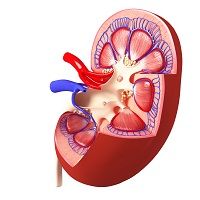Article
Microalbuminuria: Changing Diabetes Care
Author(s):
An article published recently in the journal Diabetes Research and Clinical Practice reviews the mechanisms by which microalbuminuria causes renal and cardiovascular disease. The authors also describe appropriate interventions.

Before 1969, clinicians had no proven therapies for patients with overt diabetic nephropathy. In 1963, Harry Keen and Costis Chlouverakis developed the first radioimmunoassay for urinary albumin and identified microalbuminuria as a measure of early renal damage in diabetes. In 1969, they joined with Giancarlo Viberti to prove that microalbuminuria was a risk factor for clinical nephropathy and early death. The journal Diabetes Research and Clinical Practice has published an article ahead of print discussing treatment changes since this discovery.
Microalbuminuria predicts diabetic nephropathy, end-stage renal disease, fatal and nonfatal cardiovascular events, and hypertension. Today, clinicians use markers of microalbuminuria to plan strategies that prevent and treat diabetic nephropathy and cardiovascular disease. Patients with type 1 and type 2 diabetes have experienced treatment-induced and spontaneous microalbuminuria remission and demonstrated that remission of microalbuminuria preserves renal function.
This paper, written by researchers from Denmark, reviews the mechanisms by which microalbuminuria causes renal and cardiovascular disease. They describe appropriate interventions. These include intensified, multifactored treatment targeting glycemic control, blood pressure (including renin angiotensin system blockade) and dyslipidemia.
The authors review a wealth of clinical research, presenting studies in a logical order that explains our forward progress clearly. They describe the progression from normoalbuminuria to microalbuminuria (primary prevention), and microalbuminuria to diabetic nephropathy (secondary prevention). When employed aggressively and consistently, evidence-driven approaches reduce diabetic complications and improve prognosis significantly.
Harry Keen died in 2013. His legacy is the use of microalbuminuria globally. No biomarker except urinary proteomics has outperformed microalbuminuria as a valid, robust, independent predictor for fatal and nonfatal cardiovascular outcome in diabetes. This review re-introduces its history and affirms its continued utility.




